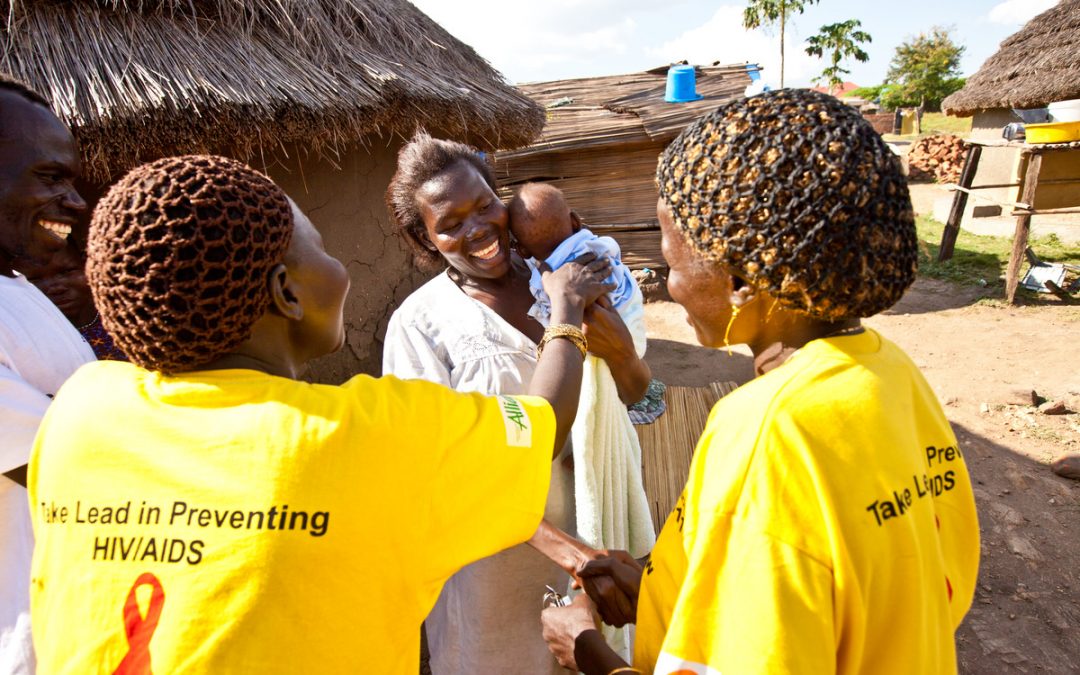On December 1 every year, the world marks World AIDS Day, and each year, there’s a specific theme. Last year, the focus was on the difference that communities make, and Eddie Kimani, a DSW Youth Champion from Kenya highlighted the importance of community-level decision making and delivery in saving lives. 2020’s theme is ‘Global solidarity, shared responsibility’. In a year where the world’s attention has been captured by the COVID-19 pandemic, we’ve all been made aware once more of how health impacts lives and livelihoods and how crises like these can indeed only be overcome with ‘global solidarity and shared responsibility’. We have learned how interlinked health is with other critical issues, such as social protection, gender equality, economic stability, and reducing inequality.
The COVID-19 crisis has exacerbated the challenges faced by people living with HIV, including accessing life-saving health care. Lockdowns and border closures imposed to stop COVID-19 are impacting the production of medicines, their import, and distribution, and increasing their cost. It has been estimated that the final cost of exported antiretroviral medicines from India could be between 10% and 25% higher than normal prices. While the COVID-19 pandemic has reversed progress on achieving the target of ending the AIDS epidemic by 2030, UNAIDS has highlighted, that; “we must address these dual epidemics—not by taking away from the HIV response for the COVID-19 response, but rather by being agile and innovative to support the continuation of HIV services while also appropriately leveraging and expanding on the substantial infrastructure, research and policies that HIV investments have created”.
As in every crisis, those that are vulnerable are affected the most. In order to end the colliding pandemics of HIV and COVID-19, a gender-responsive approach is therefore of paramount importance. The COVID-19 pandemic has disproportionately affected women and girls, in particular in low- and middle-income countries. Similarly, in some parts of the world HIV has a higher prevalence and disproportionately impacts women and girls. In sub-Saharan Africa, five in six new infections among adolescents aged 15–19 years are among girls. Young women aged 15–24 years are twice as likely to be living with HIV than men. The social, cultural, and economic dimensions of gender inequality restrict women’s control in deciding how, when, and with whom they have sex and limit their ability to access preventive tools- increasing their vulnerability to HIV infection.
More and more countries across the world are developing women-centered HIV care tool kits and provide their clinicians and health workforce with specific guidelines on how to support women-centered approaches to HIV care. HIV prevention needs a similar approach, and this includes developing innovative women-centered tools that are accessible and affordable, discreet, and applicable without partner consent. These considerations should be in mind from the research bench to delivery. 2020 brought good news on this front. IPM’s Dapivirine ring, a discreet vaginal ring with a long-acting antiretroviral drug received a positive scientific opinion from the European Medicines Agency. This paves the way for the ring to be approved by national health authorities in low- and middle-income countries. There was also encouraging news from the HIV Prevention Trials Network study, showing a long-acting injectable pre-exposure prophylaxis (PrEP) option to be highly effective in preventing HIV acquisition in women. Both tools have the potential to empower women to protect themselves and save millions of lives.
The global COVID-19 outbreak has brought about unseen global investments in research and innovation for much-needed tools to fight the pandemic. Similar efforts are needed to address the research and product gaps for HIV & AIDS and other poverty-related and neglected diseases that are endemic in many countries. This year’s G-FINDER sexual and reproductive health (SRH) report found that in some cases the slow progress to meet people’s SRH needs is due to remaining research and development gaps that need to be filled with technologies that are relevant for low- and middle-income country contexts. With the right investments and scientific achievements, we might also see new multipurpose tools being developed in the near future that could, for example, simultaneously provide a contraceptive and protection from HIV.
The EU needs to use the opportunity of the new Horizon Europe programme and the new EU Africa Global Health partnership to devote funding to develop new and improved solutions against HIV & AIDS, in particular tools centered on the needs of women and girls. From COVID-19 to poverty-related diseases and sexual and reproductive health needs, governments must come together and find new ways to ensure that health systems are strengthened, and ensure that no one is left behind in accessing life-saving health commodities.
Photo: Global Fund/ John Rae

